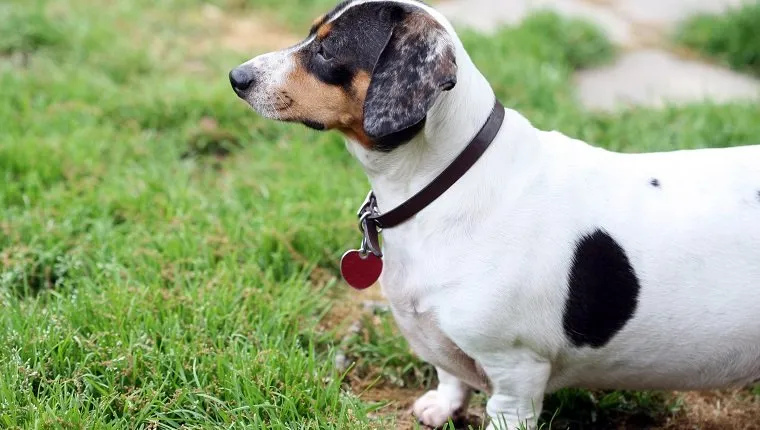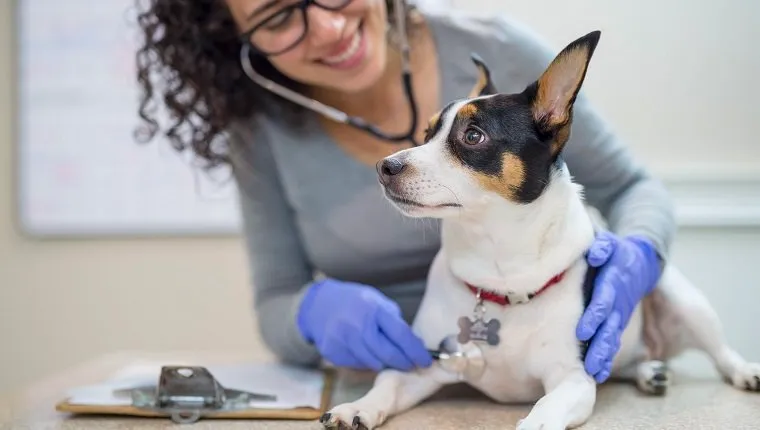Hypothyroidism in dogs is a disorder where the thyroid gland in the neck doesn’t secrete enough thyroxine, a hormone that controls metabolism. This means that a dog’s body is no longer able to convert food into fuel at an appropriate rate.
Age, breed, lifestyle, and exposure to certain substances can all influence the onset of hypothyroidism in canines. Symptoms can range from lethargy and weight gain to seizures and heart problems.
Though causes and symptoms may vary, treatment is the same for most dogs. If you see the signs in your dog, then you must consult your veterinarian to find the best treatment options.
Here’s what you should know about hypothyroidism in dogs.
Causes Of Hypothyroidism In Dogs

Hypothyroidism can affect any dog, though it’s less common in smaller breeds and more common in several specific breeds that have a predisposition for developing the condition.
It can appear due to this predisposition in the following breeds:
- Airedale Terriers
- Boxers
- Cocker Spaniels
- Dachshunds
- Doberman Pinschers
- Golden and Labrador Retrievers
- Great Danes
- Greyhounds
- Irish Setters
- Miniature Schnauzers
- Old English Sheepdogs
- Poodles
German Shepherd Dogs and mixed breeds are usually less susceptible to hypothyroidism. Dogs who develop it typically do so around the ages of four to ten years old.
However, breed is not the only factor that leads to hypothyroidism. Spayed females seem to develop the condition more than un-spayed females, though the reason for that is unclear.
The condition may also develop due to the following causes:
- Immune disease (autoimmune thyroiditis)
- Atrophy of thyroid tissue
- Lack of exercise
- Tumor on the thyroid
- Exposure to medications such as steroids
- Adrenal disorder
Symptoms Of Hypothyroidism In Dogs

Hypothyroidism in dogs affects metabolism, which is necessary for all organs and the entire body to function. Because of this, the symptoms can be quite variable.
Here are a few of the most common symptoms:
- Depression or lethargy
- Changes in behavior including aggression or anxiety
- Head tilting
- Hair loss and thin coat
- Frequent naps and loss of interest in exercise
- Dry, discolored, or infected skin
- Weight gain, obesity, and muscle loss
- Cold intolerance
- Ear and toenail infections
- Slow heart rate
- Seizures
- High cholesterol
- Anemia
Treatments For Hypothyroidism In Dogs

Hypothyroidism is treatable in dogs with daily oral drugs. However, this treatment is ongoing for the rest of life once the condition is diagnosed.
While the condition isn’t necessary life-threatening, it can significantly decrease the quality of life for a dog who has it. The drug vets usually prescribe is a synthetic hormone called levothyroxine or L-thyroxine, and it doesn’t cost much.
Your veterinarian may also wish to take preventative measures if thyroid hormone levels are low to stop the onset of full-blown hypothyroidism. For example, they may prescribe thyroid glandulars and the cofactors — tyrosine and iodine — to try and bring thyroid hormone production back to normal.
They will also strictly monitor your dog’s blood for signs of progress.
Do you have a dog who suffers from hypothyroidism? How do you treat it? Let us know in the comments below!









